Complete series of China maps by Martini and Blaeu
Detail
This is a complete series of all the maps published in the Atlas Novus Sinensis and/or the China part of the Asia part of the Atlas Maior.
The entire collection consisting of:
- 2 frontispieces
- 1 map of China
- 15 maps of provinces
- 1 map of Japan/Korea
All maps were acquired over a period of several years; so they do not come from one and the same atlas.
All maps are in very good condition.
All maps were and are still individually and uniformly framed. See last picture as example. The framing may have affected the quality of the photography as taken, but certainly not the quality of the maps as such.
Since all maps are individually framed, transport costs have to be agreed upon. The standard costs mentioned below do not apply.
This item is sold
Martini, M. and Blaeu, J.
Martino Martini (卫匡国) (1614-1661), was born in Trento, in the Bishopric of Trent. He entered the Society of Jesus in 1631, after finishing his schooling. He had a strong interest in astronomy and math, and he was able to study under Athanasius Kircher. Martini continued his theological studies in Portugal, on his way to Rome, and was ordained in 1639. He left Portugal for China in 1640, and arrived in Macau in 1642. He settled on the mainland in Hangzhou, Zhejiang Province, which he used as a base in his traveling around the country.
Martini had arrived in China at the very end of the Ming dynasty; in 1644, the last legitimate Ming Emperor, the Chongzhen Emperor, hanged himself. The Qing Dynasty then rose, and when Manchu forces came to the town where Martini was staying, he was asked to pledge his loyalty to the new dynasty. He agreed, and his head was shaved in the Manchu manner, and he adopted Manchu-style Chinese dress.
In 1651, Martini left China, taking an adventurous peregrination to Amsterdam by way of the Philippines and Bergen, Norway. He arrived in Amsterdam in 1653 and took his collection of manuscript surveys to Johannes Blaeu for publication. The collection of maps that Martini imparted to Bleau is worthy of close examination. He carried with him a copy of the Ming dynasty manuscript atlas by Zhu Siben (compiled 1311/12), with revisions from the printed atlas by Luo Hongxian — his “Guangyu tu” (enlarged terrestrial atlas, 1579).
Martini’s Novus Atlas Sinensis was published in 1655. He went back to China and settled in died at Hangzhou, where he died in 1661.
The Atlas Sinensis, apart from the technical excellence of its production, is important as being the first European atlas of China. It remained the standard geographical work on that country till the publication in 1737 of D’Anville’s Atlas de la Chine.
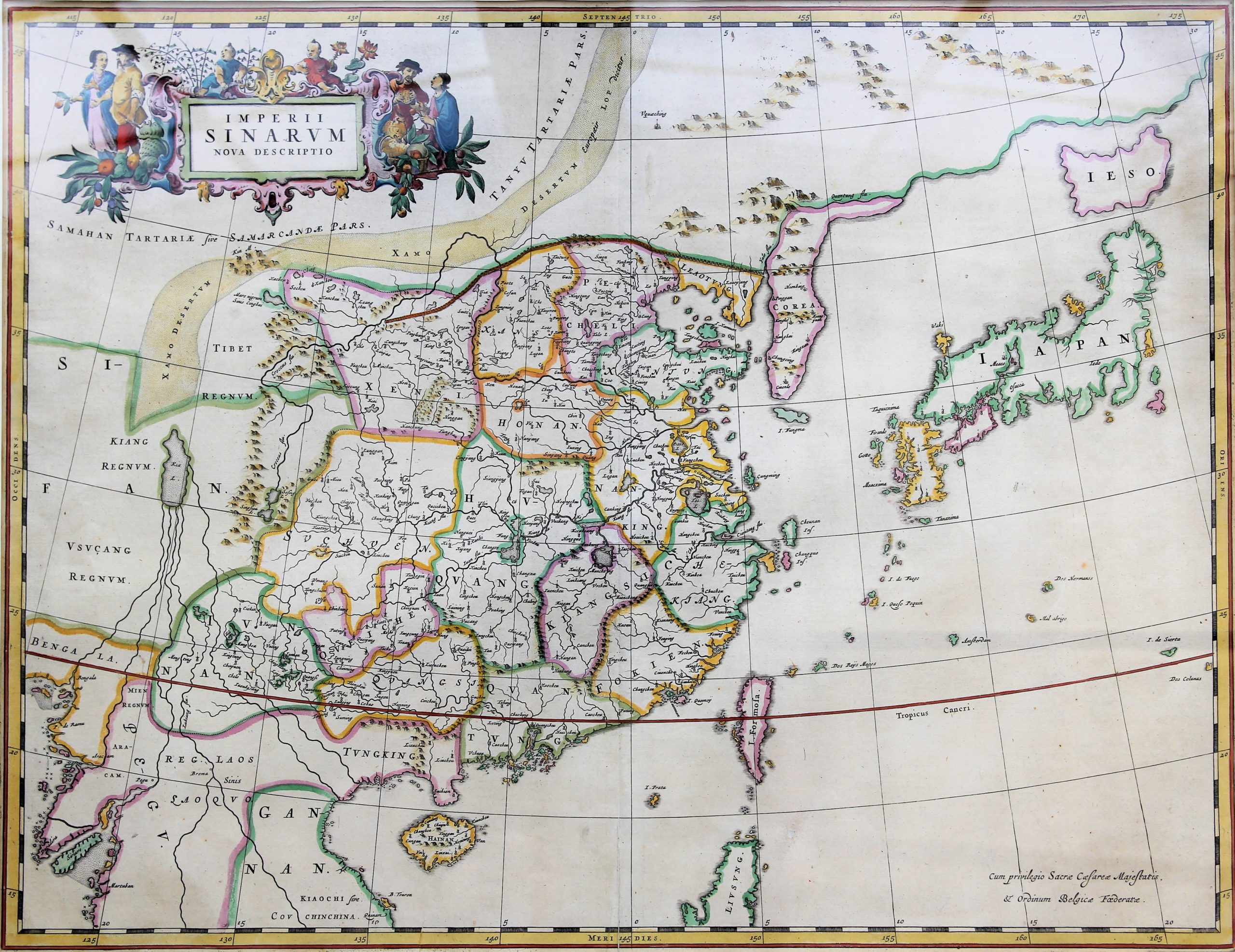
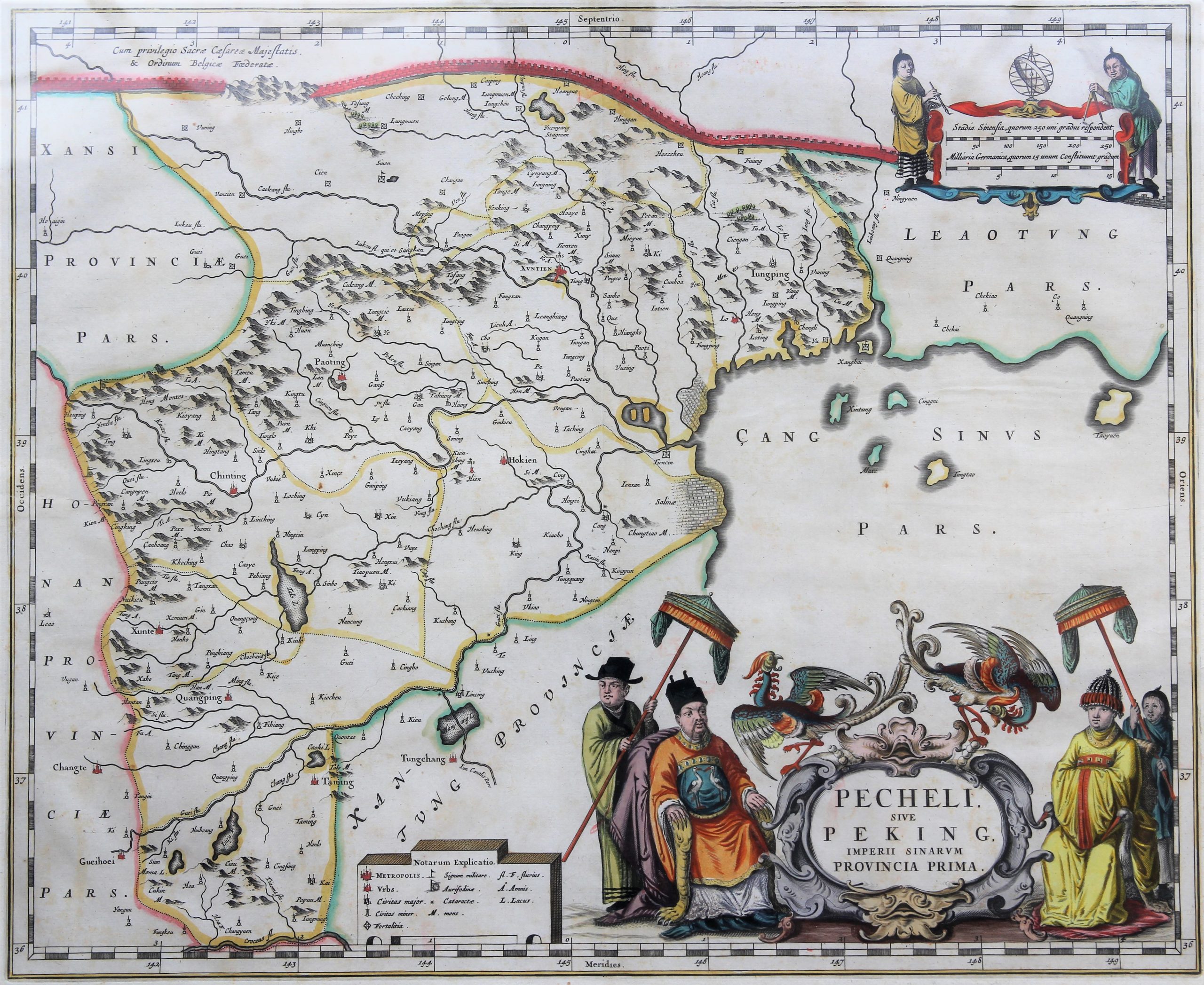
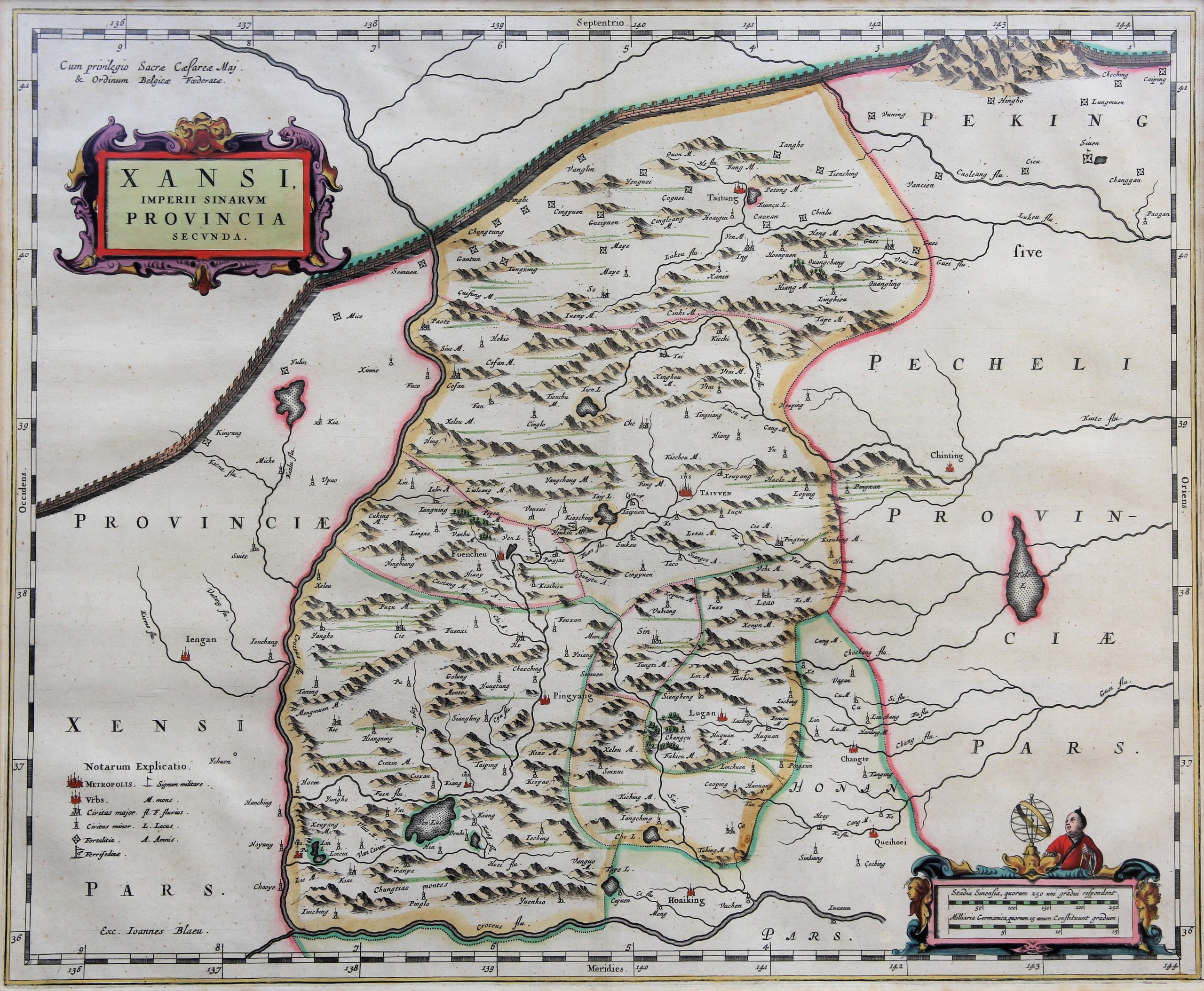
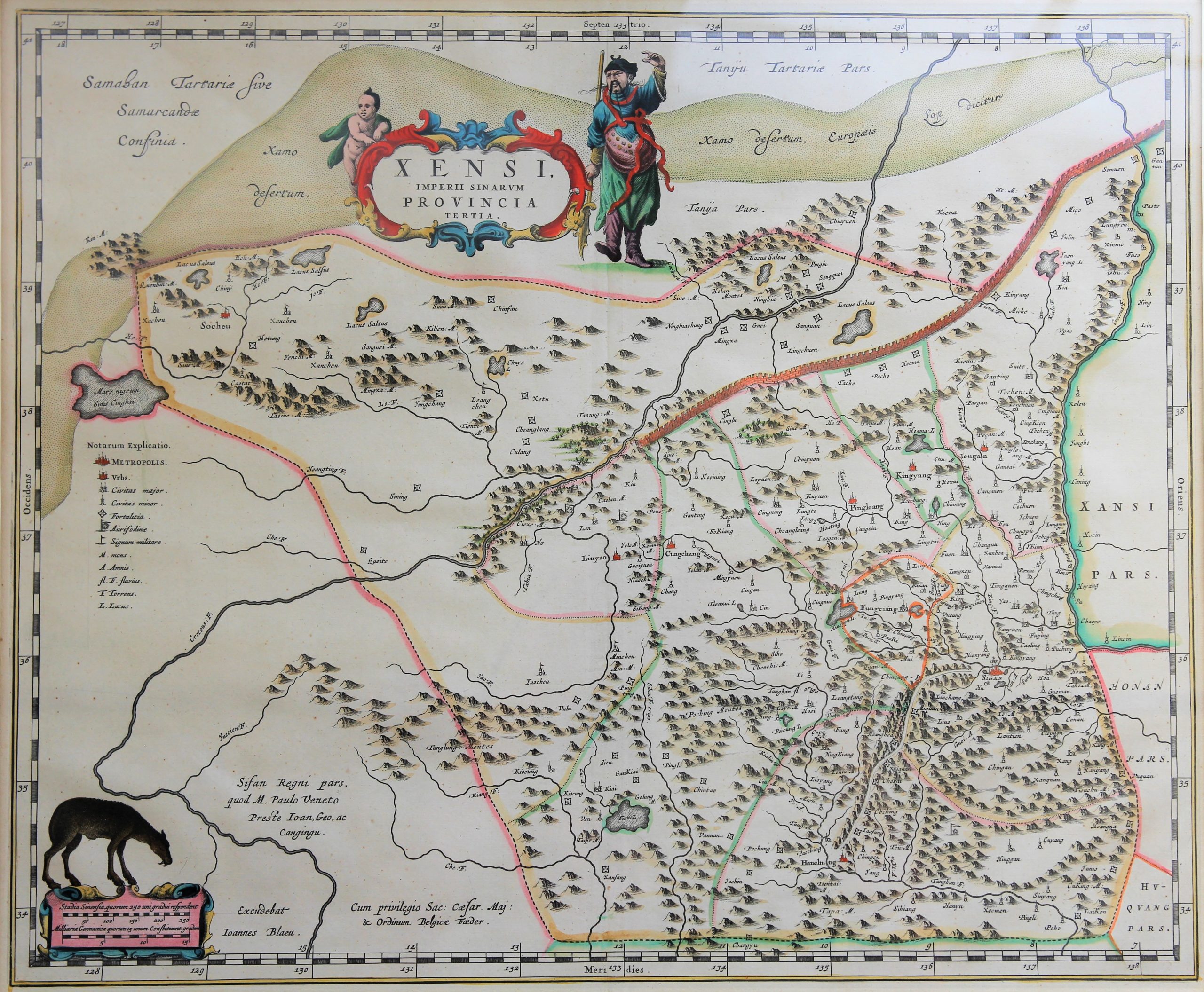
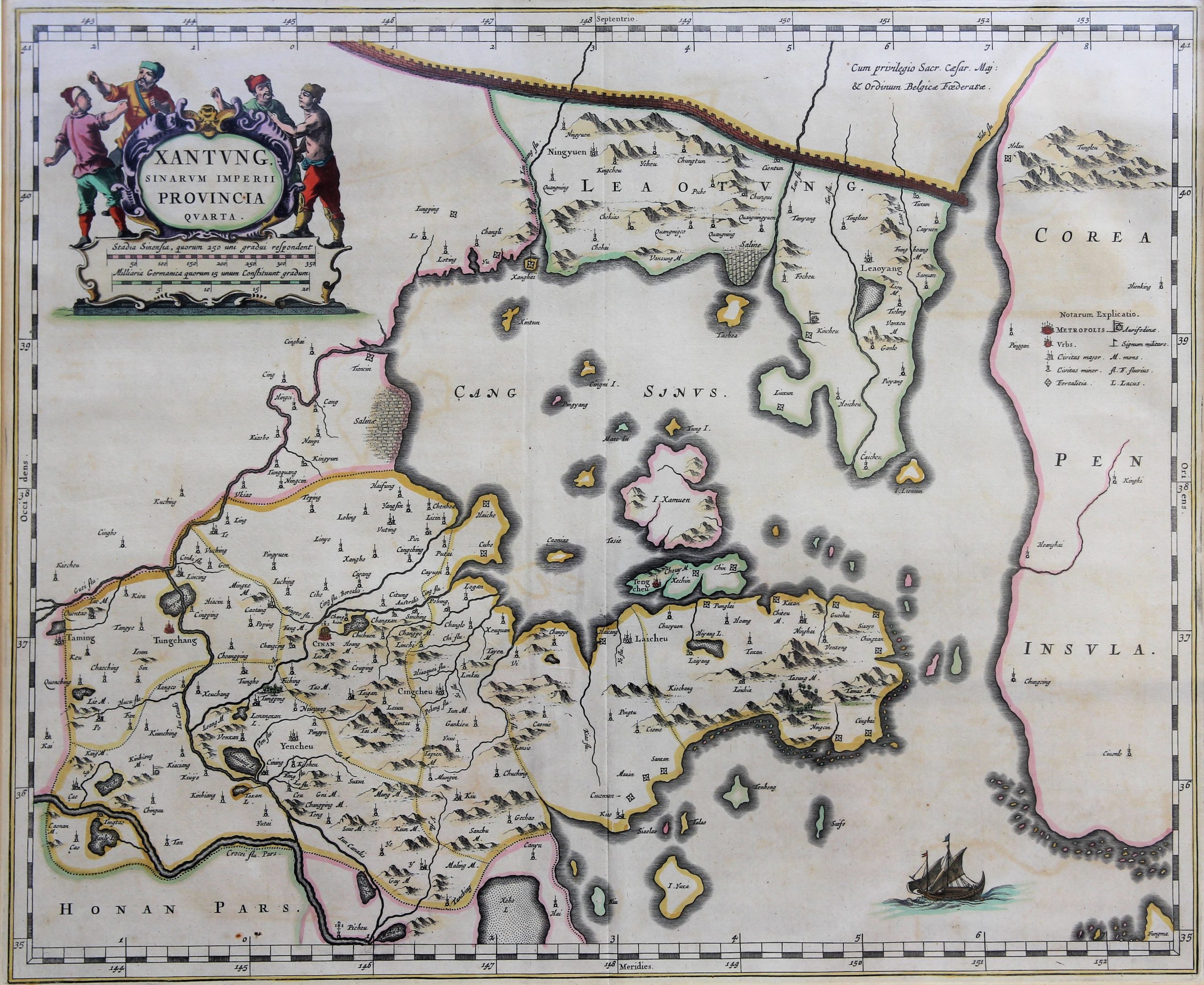
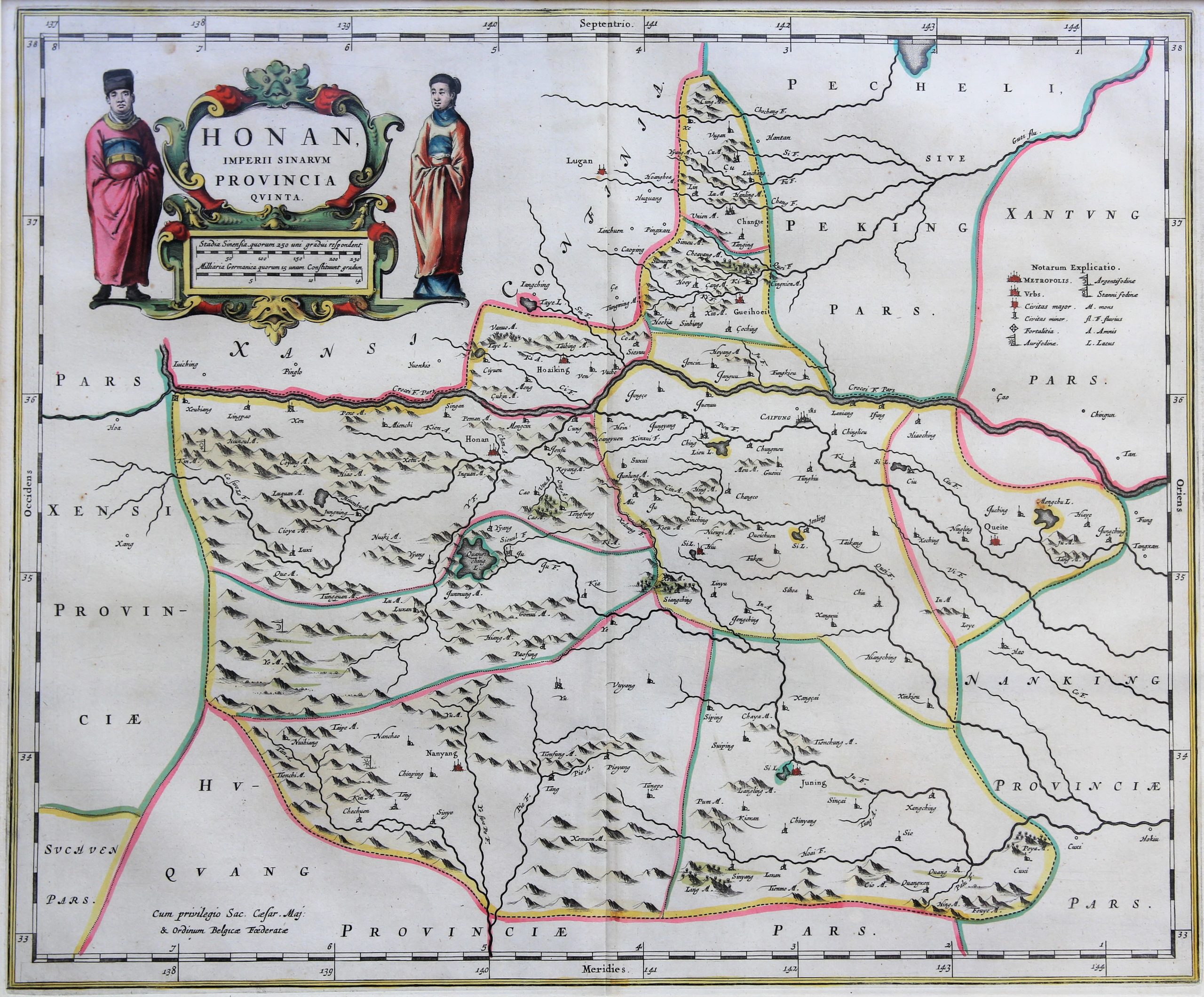
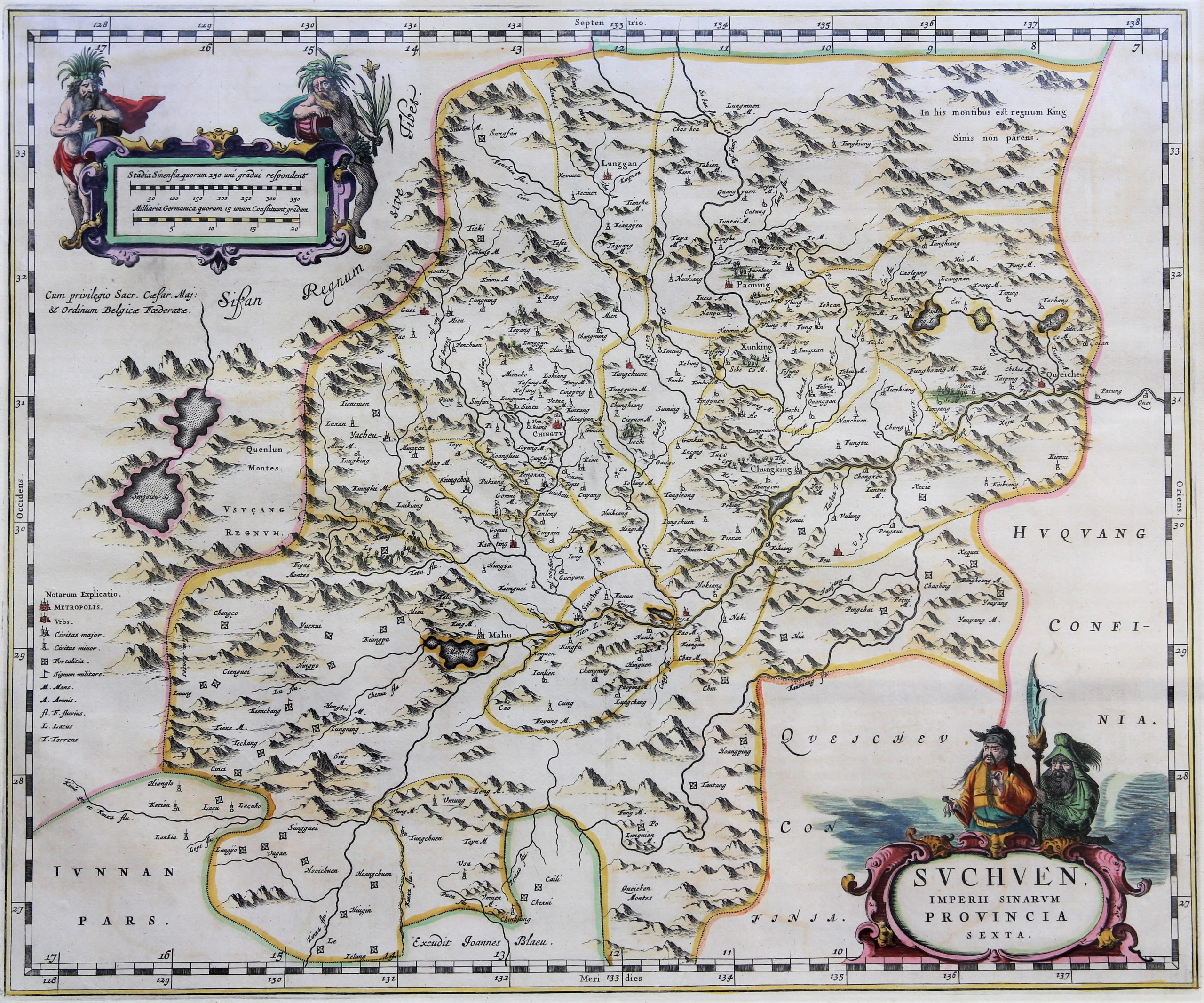
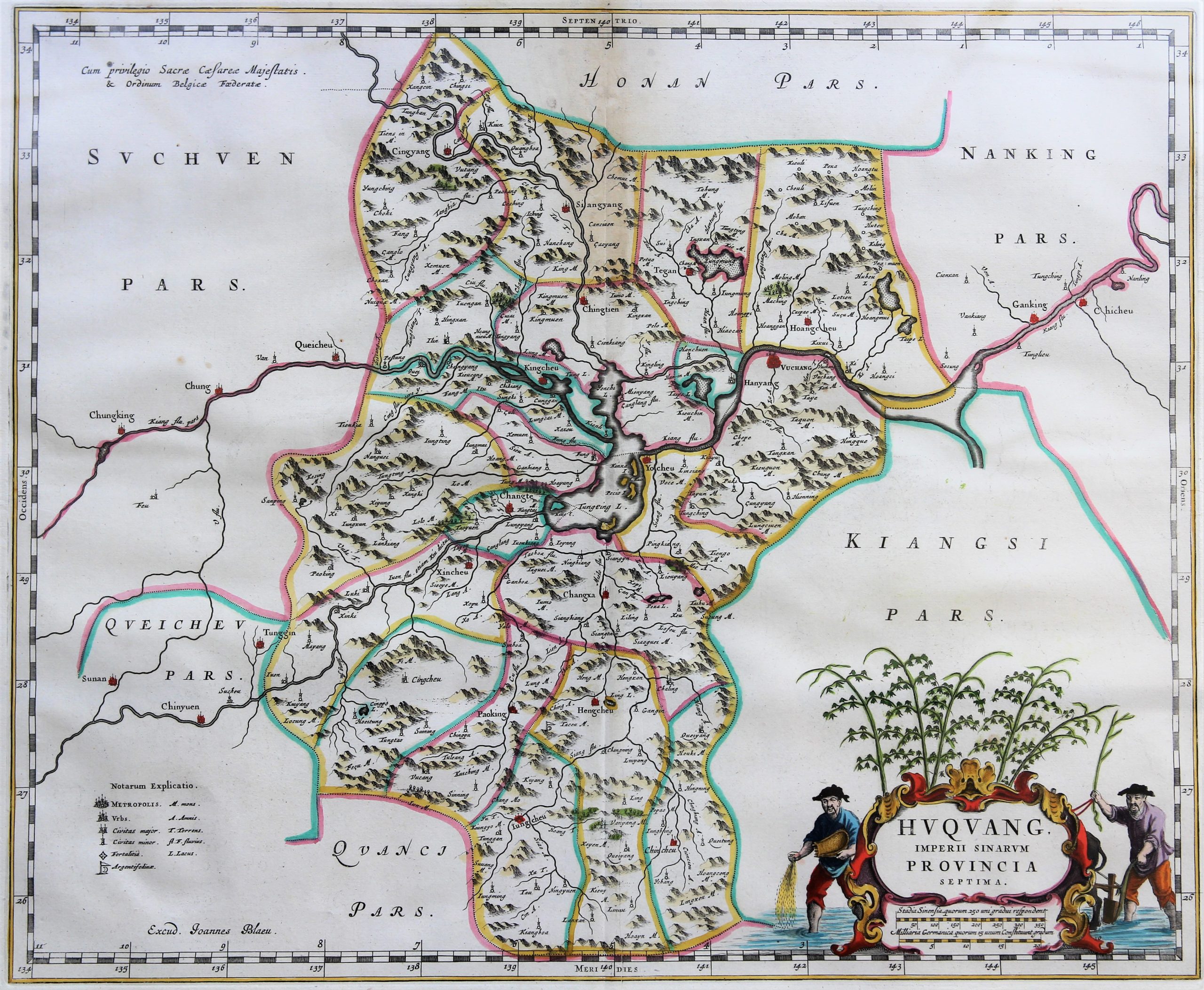
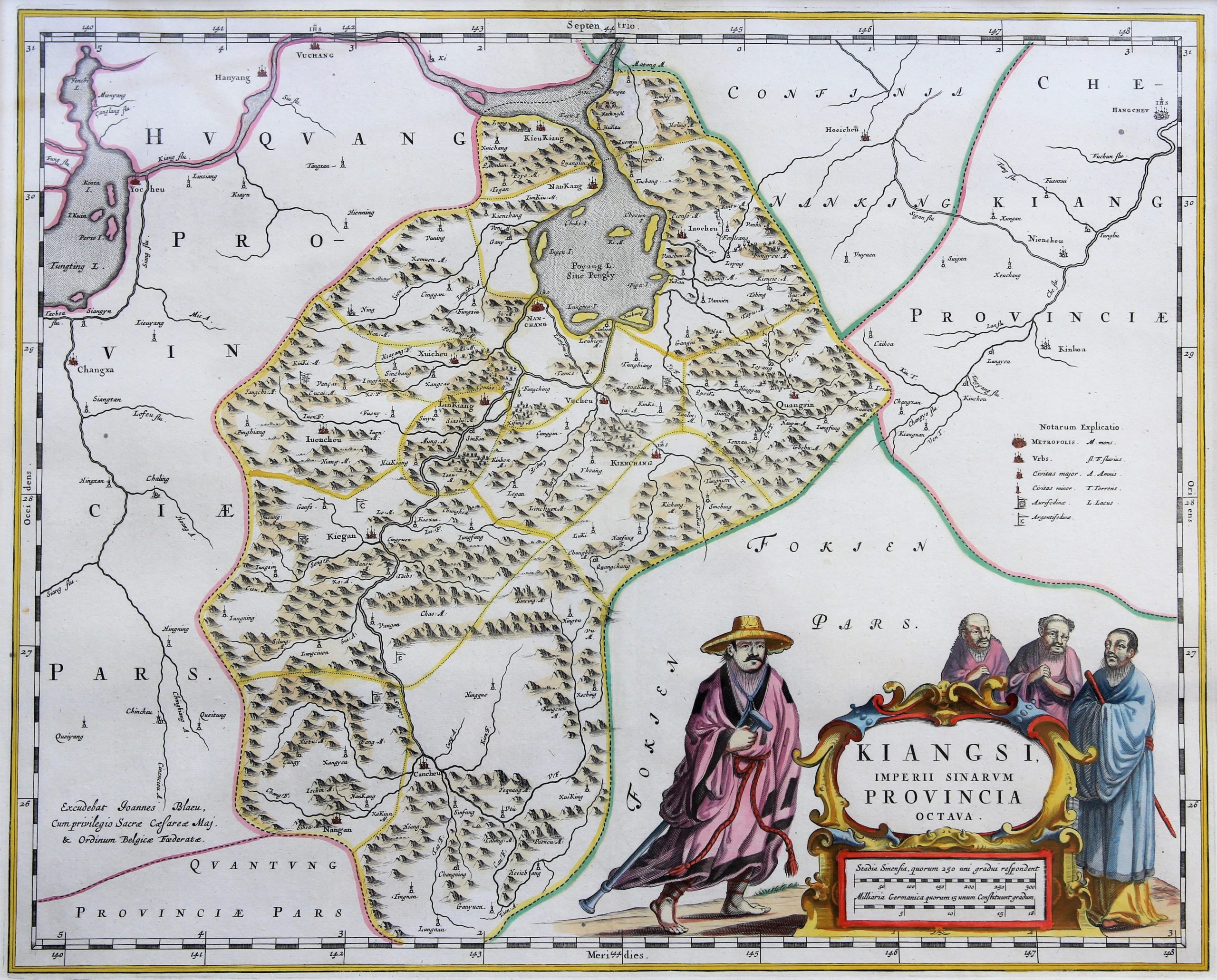
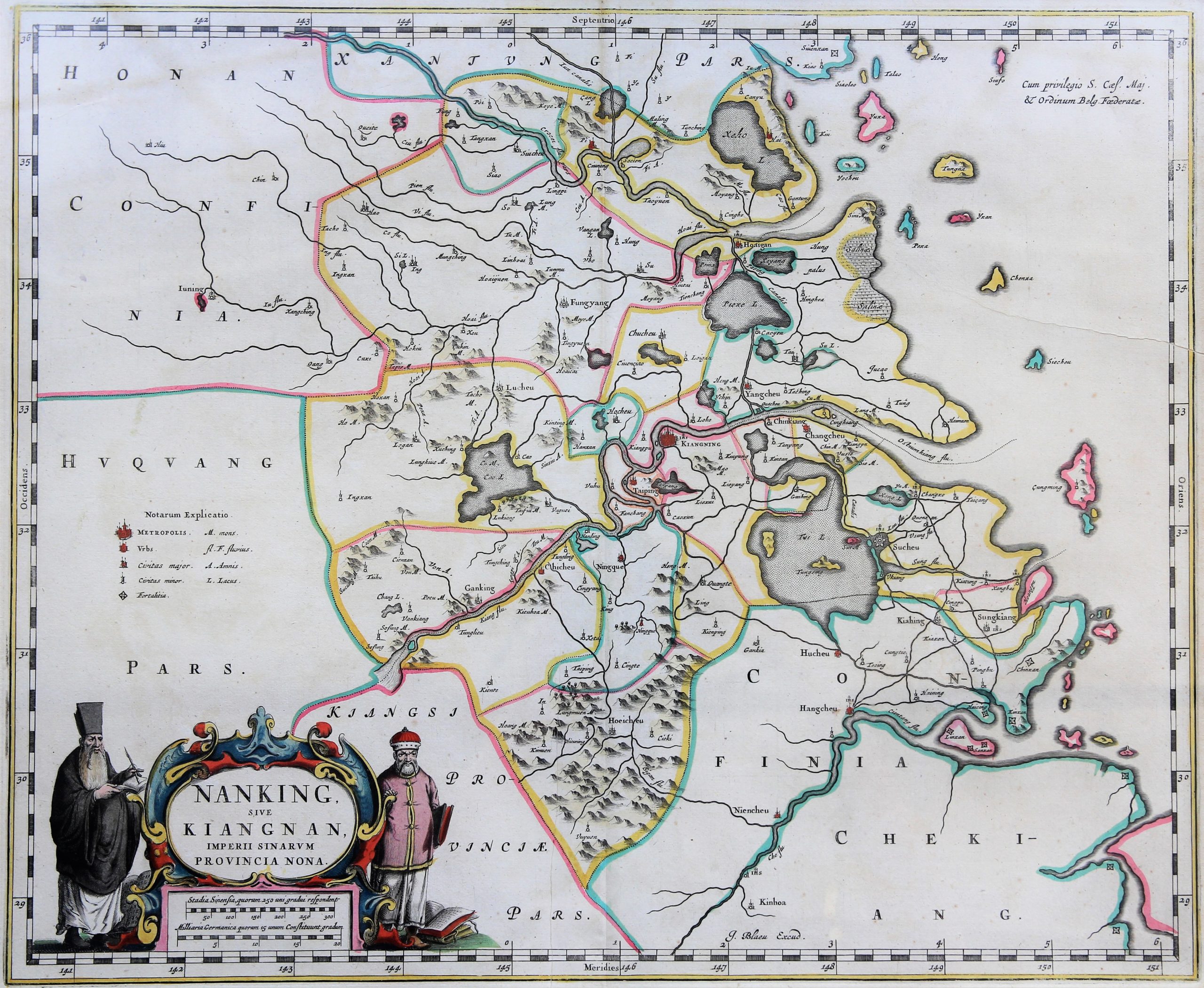
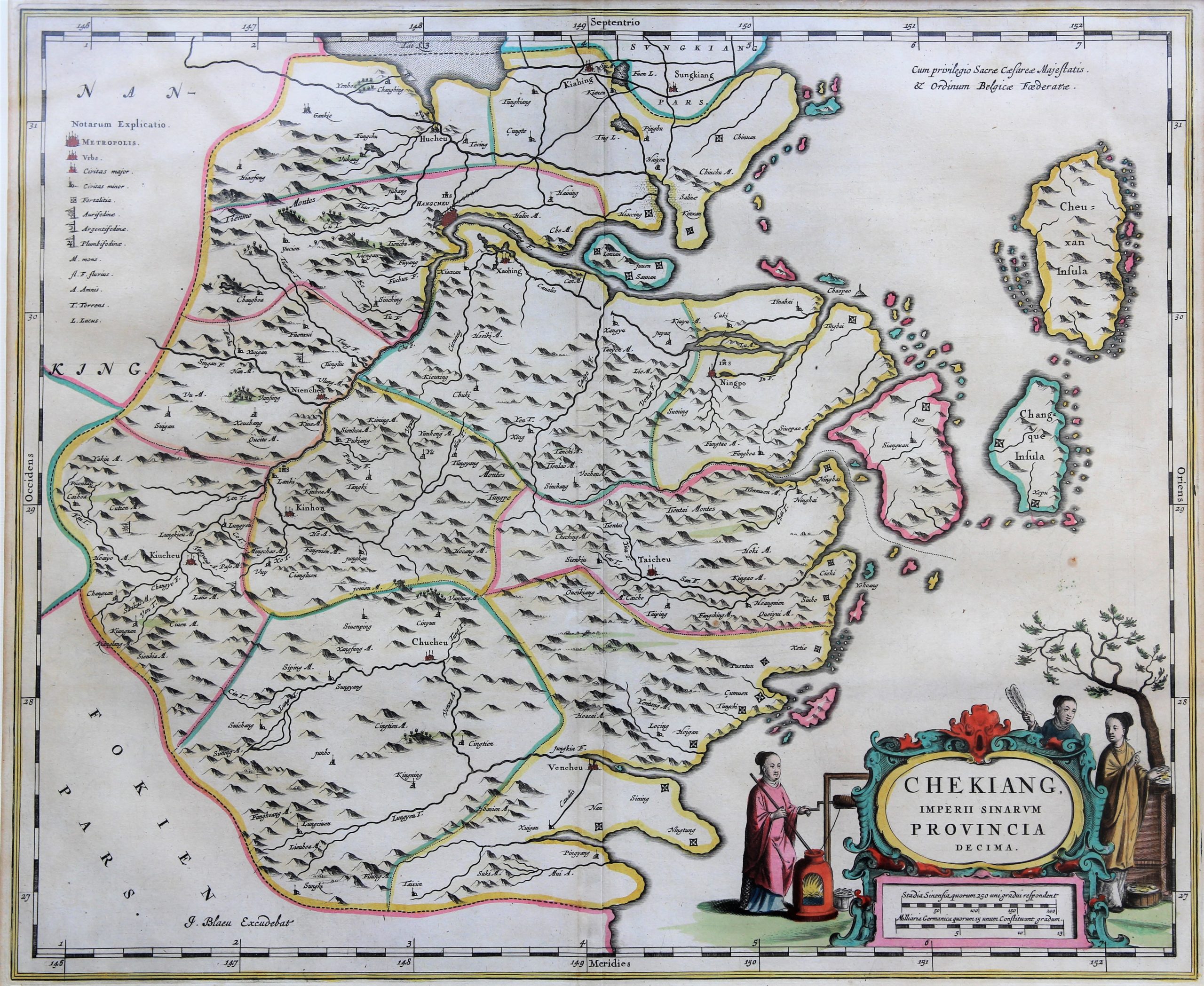
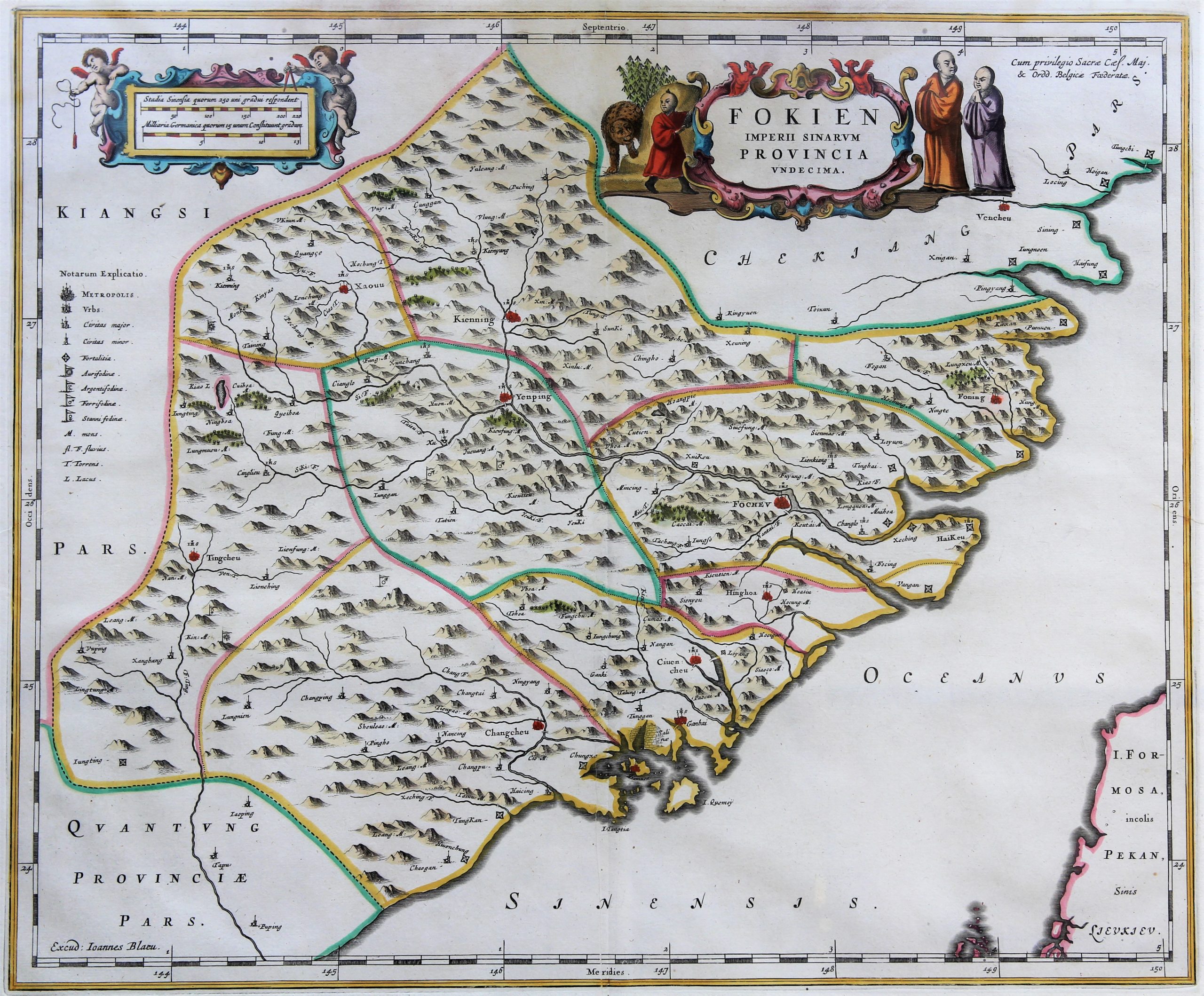
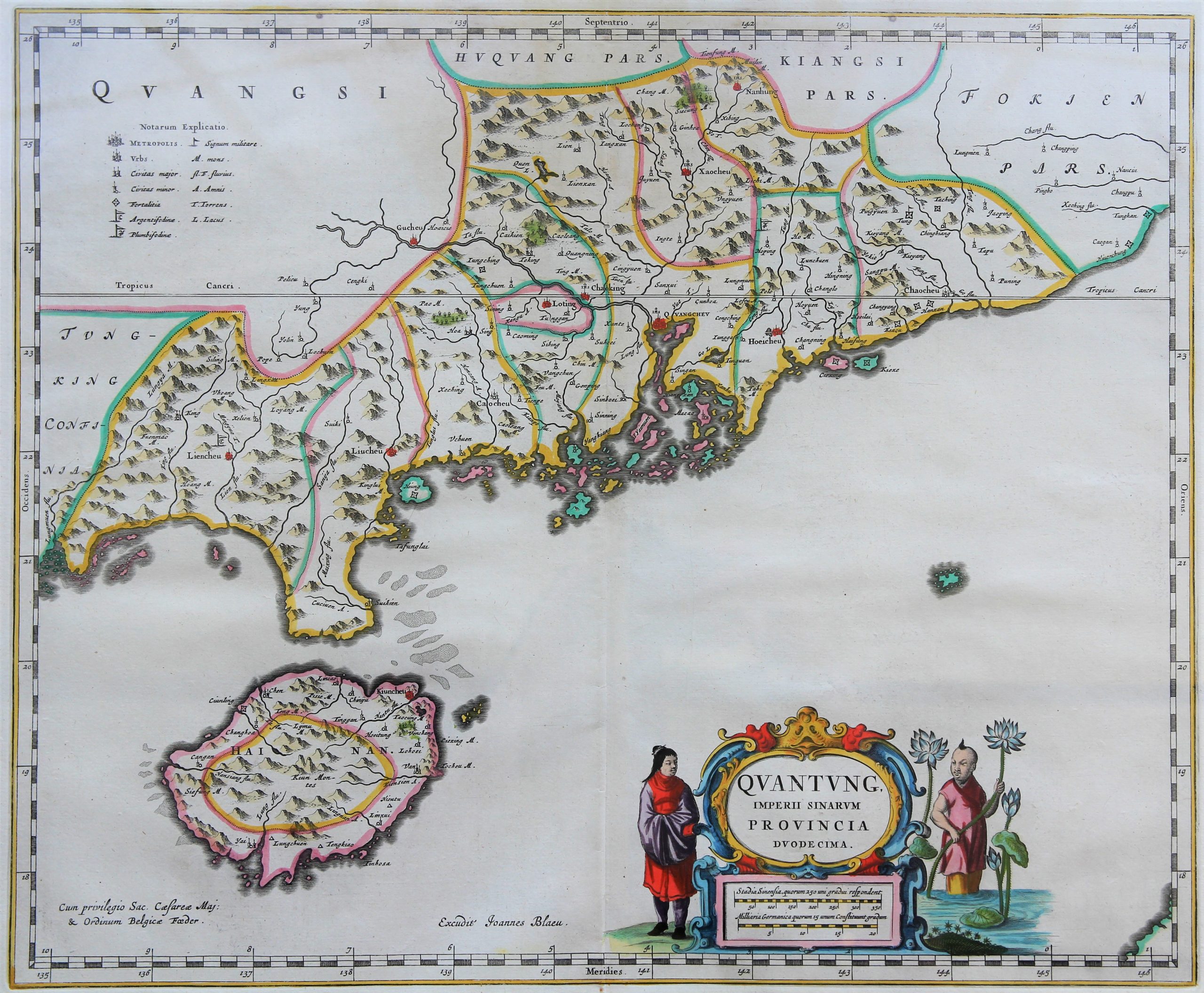
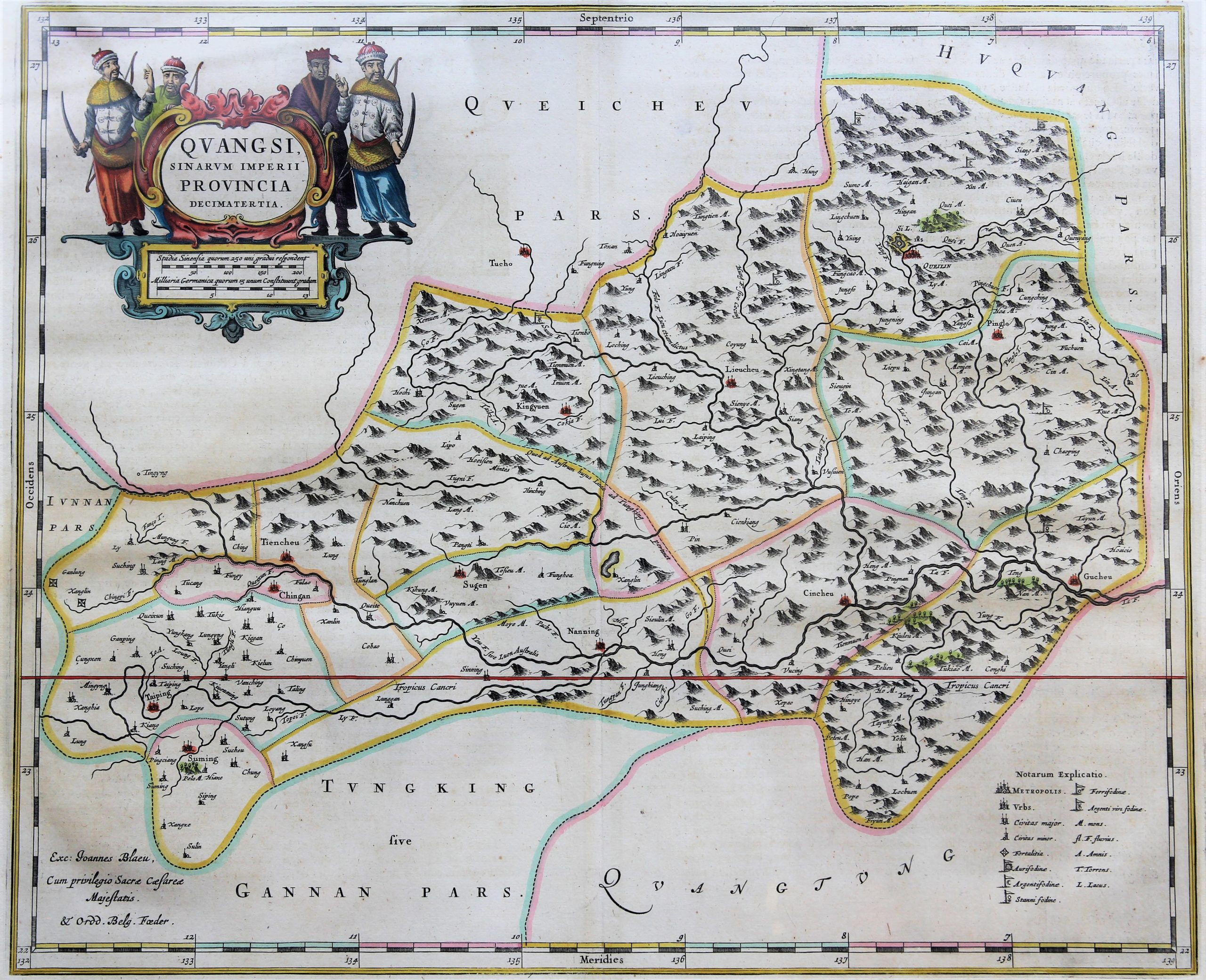
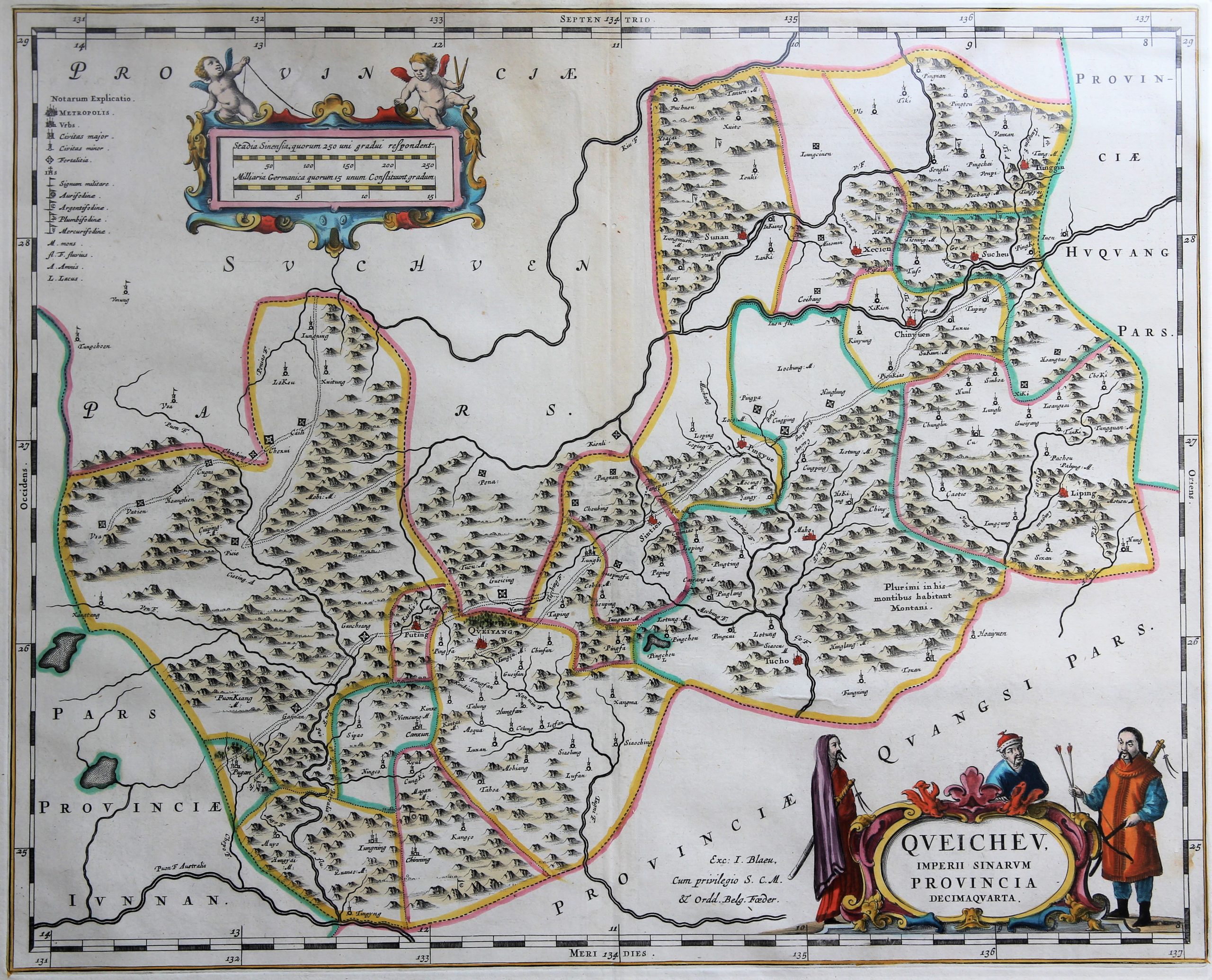
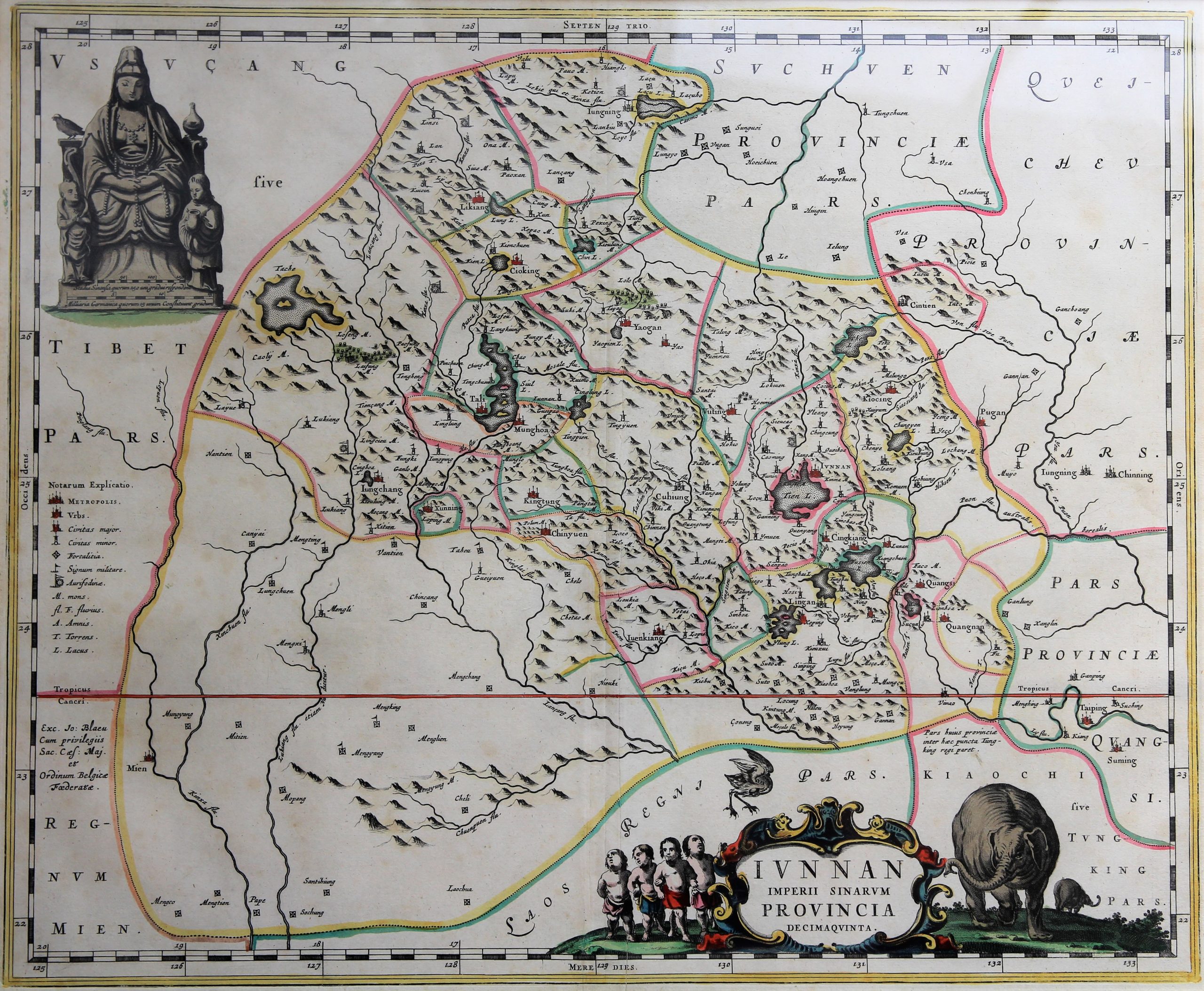
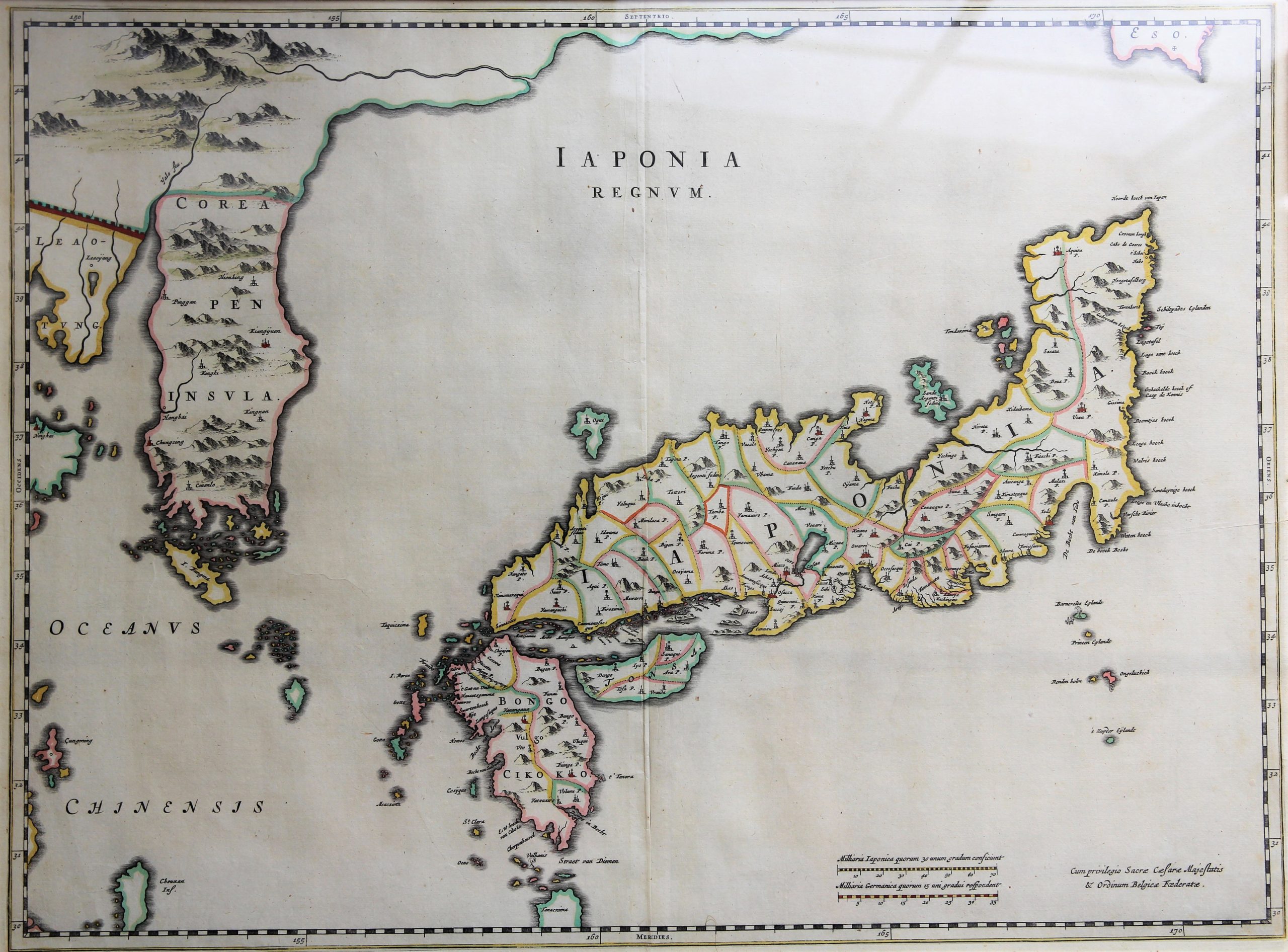
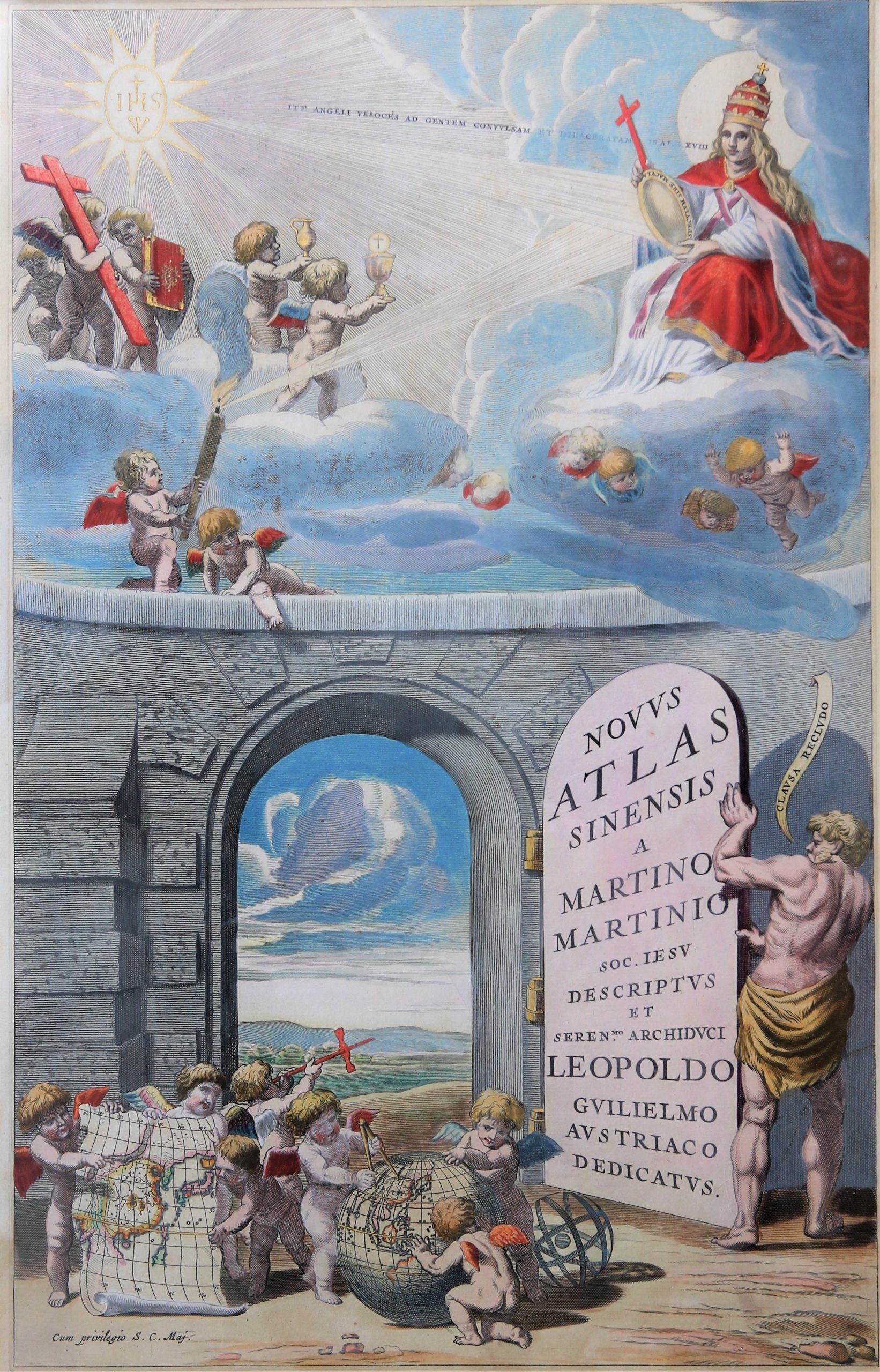
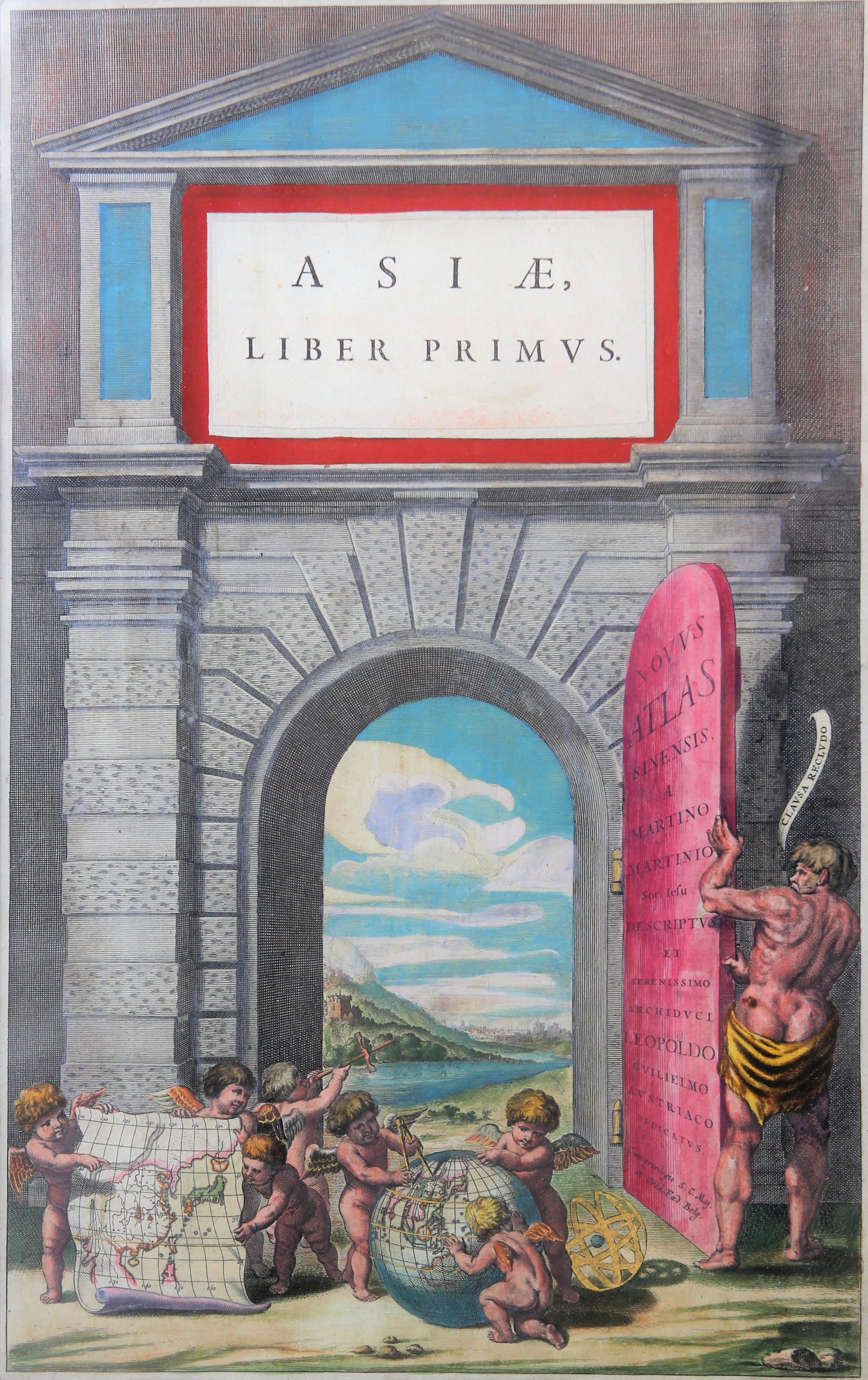
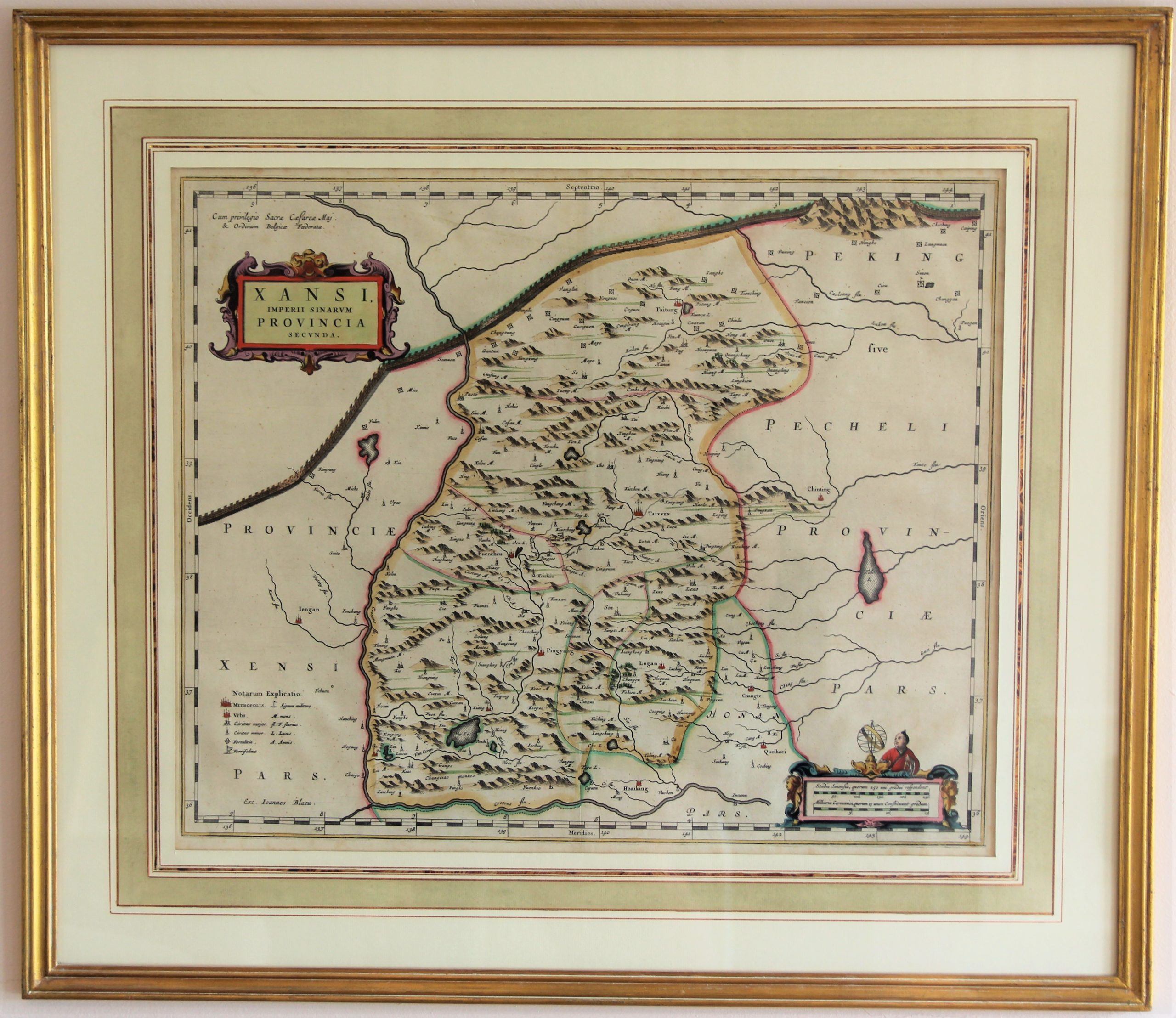
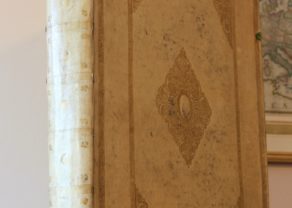
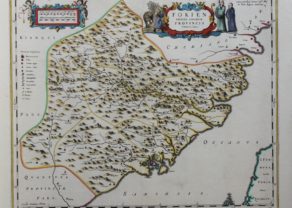
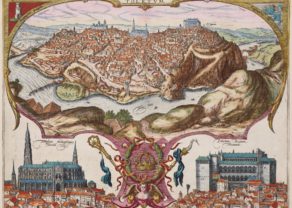
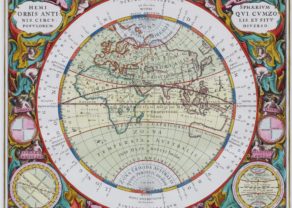
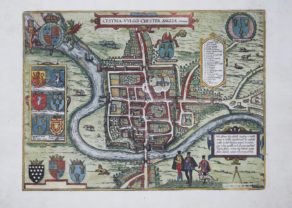
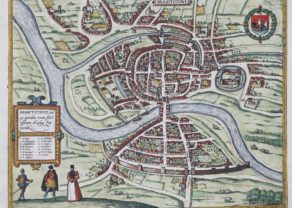
Order of the atlas
Except for the frontispieces, the pictures of the maps follow the order in the atlas:
1 Imperii Sinarum
2 Provincia prima: Pecheli sive Peking
3 Provincia secunda: Xansi (Shaanxi): see final picture as example of framed maps
4 Provincia tertia: Xensi (Shanxi)
5 Provincia quarta: Xantung (Shandong)
6 Provincia quinta: Honan (Henan)
7 Provincia sexta: Suchuen (Sizhuan)
8 Provincia septima: Huquang (Huguang)
9 Provincia octava: Kiangsi (Jinagxi)
10 Provincia nona: Nanking sive Kiangnan (Nan Zhili)
11 Provincia decima: Chekiang (Zhejiang)
12 Provincia undecima: Fokien (Fujian)
13 Provincia duodecima: Quantung (Guangdong)
14 Provincia decimatertia: Quangsi (Guangxi)
15 Provincia decimaquarta: Queicheu (Guizhou)
16 Provincia decimaquinta: Iunnan (Yunnan)
17 Iaponia Regnum (Japanese empire)
18 First frontispiece
19 Second frontispiece
In 2011 we published a study on the China maps by Martino in the cartographic journal of the BIMCC. Please find here a link to the first of three parts of this article: https://www.bimcc.org/uploads/newsletters/nl39.pdf